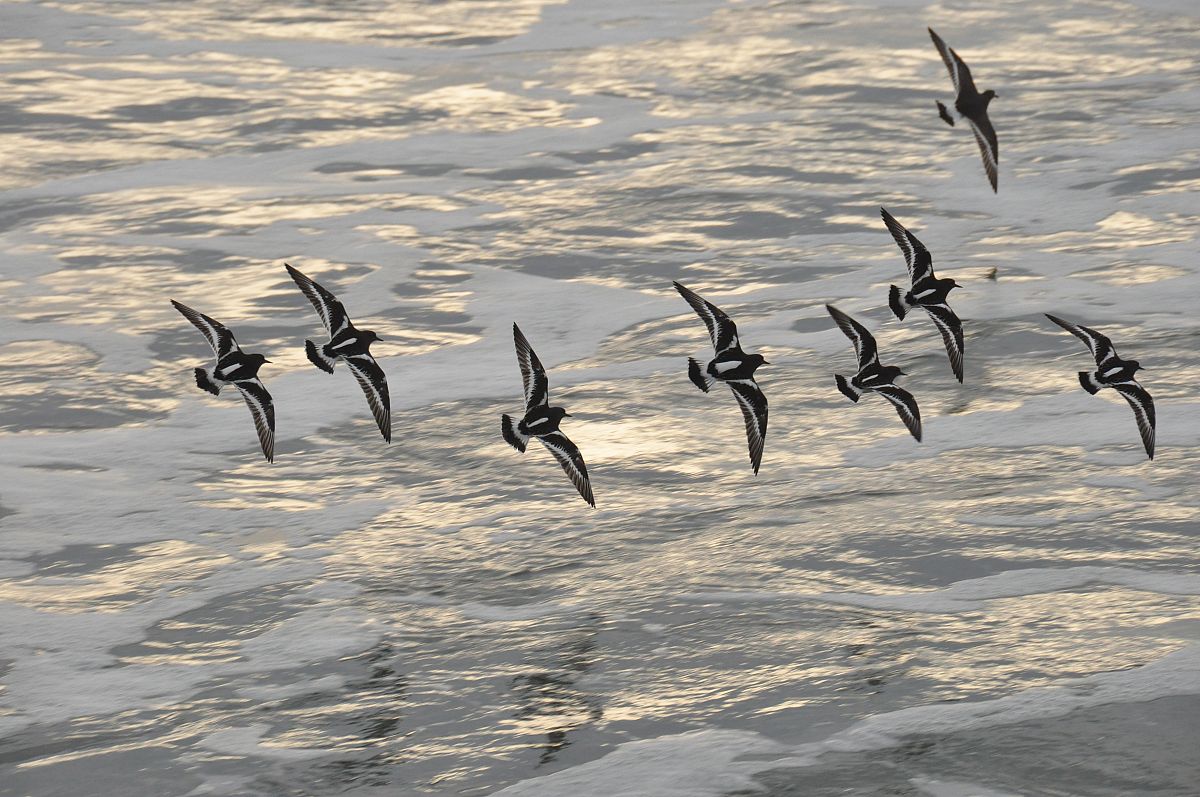It has been said that seabirds are key indicators of the impact of climate change on the world’s oceans. How exactly? In Antarctica, for example, seabirds depend on ice: Seabirds eat fish, which eat krill. The krill eat algae, and the algae grow underneath sea ice. With warming oceans, and less ice, there will major consequences for this food chain.
In an effort to quantify and model how seabirds will fare in the face of climate change, Stephanie Jenouvrier, a biologist at Woods Hole Oceanographic Institution (WHOI), investigates the topic.
Seabirds fly very long distances to forage at sea, but they return to nesting sites on land to breed. Many seabirds mate for life sometimes live and reproduce into their fifth or sixth decades.
Studying climate change requires a long-term perspective, so researchers make multiple trips to seabird nesting sites, just as the birds do. Each year they weigh and count seabirds, count eggs, band chicks and equip birds with satellite tags to record the ranges and duration of their foraging flights.
A research team is needed to collect data on what the species eat, where they go, and how much time they spend foraging. All of these factors hold a role in modeling responses to climate change. Using this information along with fieldwork, data on sea ice, species’ ecology and climate projects are integrated into mathematical models to project seabirds’ responses to climate change.
Jenouvrier and WHOI biologist Hal Caswell previously used models to predict the future of emperor penguin populations in one part of Antarctica. Emperors breed annually, and need the presence of sea ice to breed and feed. They calculated that emperor penguins there had a 42 percent chance of declining by more than 90 percent by 2100.
In seabirds’ projected futures, “there are winners and losers,” Jenouvrier said. Different life strategies create differences in species’ flexibility to deal with rapid climate change.
In contrast to penguins, petrels might be able to cope with climate change. Jenouvrier found that they can skip breeding—for instance, in a year when warming conditions diminish sea ice and decrease food resources. Long lives give petrel time to reproduce in subsequent years, so the skipped year wouldn’t seriously affect a bird’s lifetime number of offspring.
“The aim of this is to move beyond borders for conservation,” she said. “We need a new paradigm of global cooperation and need to move quicker to mitigate the impacts of climate change on polar seabirds.”
Source: Environmental News Network


